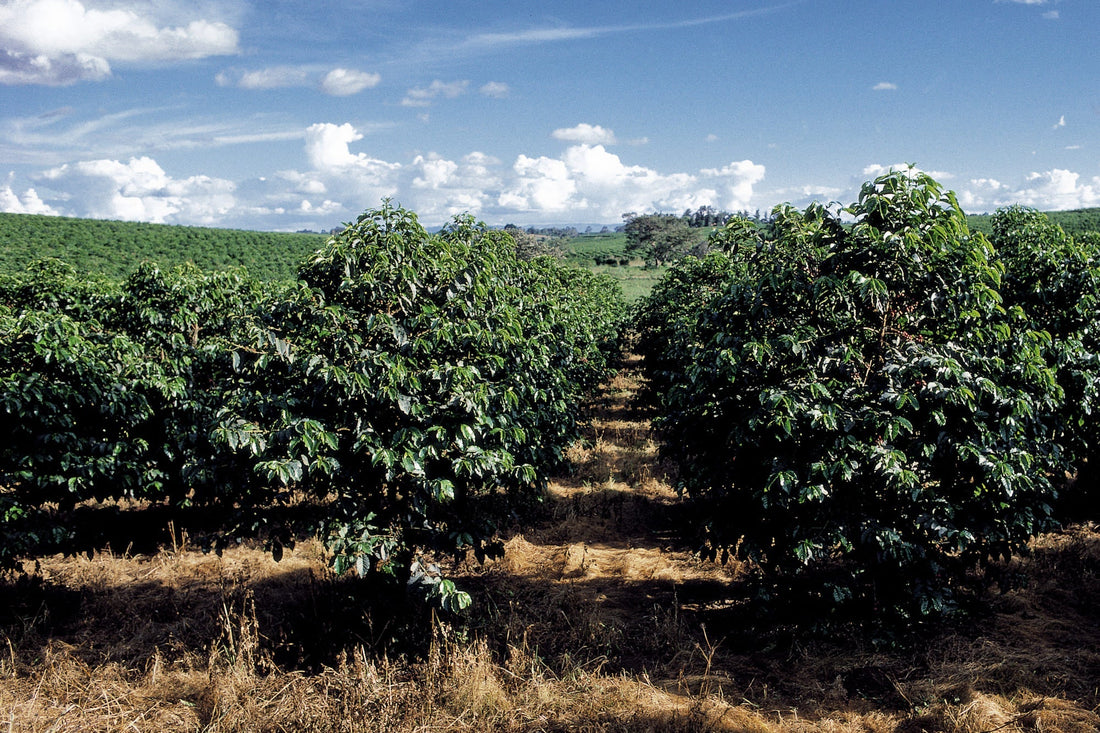Reading material
New varieties and new processing methods: The ever-evolving world of coffee

Coffee has become an essential part of our lives these days, enjoyed by many people as a morning cup, a refreshment during work, or a companion during relaxation time.
At the same time, the coffee industry is constantly taking on new challenges, and in recent years, new varieties and new processing methods have been attracting attention.
These are not just trends, but a major wave of change that directly impacts our response to climate change, the sustainability of producers, and the diversification of flavors enjoyed by consumers.
In this article, we will introduce in detail the characteristics and background of new varieties and new processing methods, as well as points to enjoy when choosing coffee.
Background of the creation of new varieties

Coffee "varieties" are like grape varieties in wine.
Among the most common Arabica species, there are many varieties, including Typica, Bourbon, and Caturra.
There are several reasons why this breed has been gaining attention in recent years.
-
Responding to Climate Change <br data-end="597" data-start="594">Rising temperatures and abnormal weather are becoming problems worldwide, and traditional varieties are increasingly vulnerable to pests and diseases and environmental changes. As a result, research institutions and farms are working to develop new varieties that are resistant to disease and drought.
-
Diversifying Flavors <br data-end="740" data-start="737">Until now, coffee has focused on the characteristics of each growing region, but recently consumers have begun to seek more complex and unique flavors. New varieties are being developed by crossbreeding existing varieties to achieve new combinations of acidity, sweetness, and aroma.
-
Producer sustainability
One of the main goals is to protect the livelihoods of producers by introducing varieties with stable yields and high market value.
Examples of noteworthy new varieties

Here we will introduce some new varieties that have been attracting particular attention in recent years .
-
Geisha
This variety is not so much a new one as it is a variety that has been rediscovered. Originating from Ethiopia, its cultivation in Panama attracted worldwide attention in the 2000s. Characterized by a gorgeous fragrance reminiscent of jasmine and bergamot, it is not uncommon for it to fetch high prices at auctions.
-
Hybrid varieties <br data-end="740" data-start="737">Hybrid varieties that emphasize resistance, such as "Catimor" and "Castillo," which are resistant to pests and diseases, are also on the rise. These are easy for farmers to grow and can be expected to produce stable yields, so they are being actively promoted in producing countries.
-
Experimental Crossbreeding
Some farms are even crossbreeding existing popular varieties to develop beans with entirely new flavors. These unique and limited-edition varieties, like craft beer, are becoming a hot topic among coffee lovers.
Evolution of refining methods
Evolution of refining methods The refining method has a major impact on the taste of coffee.
Refining refers to the process of extracting the beans from the harvested coffee cherries, drying them, and shipping them.
Traditionally, there have been three main types.
-
Washed: Refreshing and clean taste.
-
Natural (dry): Strong fruit flavor with a pronounced sweetness and fruitiness.
-
Honey (Pulped Natural): In between, its sweetness and balance are appealing.
However, in recent years, new refining methods that go beyond this framework have been appearing one after another.
A typical example of the new refining method
1. Anaerobic fermentation
Fermentation is carried out in tanks that are kept free of oxygen.
Fermenting it in a way similar to wine creates a complex and unique flavor profile, reminiscent of chocolate, spices, and tropical fruits.
2. Carbonic maceration
The method is inspired by red wine production and uses carbon dioxide to drive fermentation.
It has a gorgeous aroma and sometimes has a vibrant flavor similar to fruit punch.
3. Experimental Drying Method
Some farms are trying to control the speed and environment of drying to adjust the flavor, for example, by drying slowly in the shade to bring out the sweetness.
Points that consumers can enjoy

New varieties and new processing methods are often thought of as information for professionals, but in fact they are of great interest to us ordinary coffee lovers as well.
-
A wider range of flavors <br data-start="594" data-end="597">Instead of the simple choice of "sour or bitter" that was available until now, you can enjoy more detailed descriptions such as "fruity and vibrant" or "spicy and complex" just like wine.
-
Get a feel for the story of your coffee <br data-start="737" data-end="740">The value of each cup of coffee increases dramatically when you learn what kind of farm it was grown on and what techniques were used to produce it. Especially when purchasing from an online shop, reading the explanation of the production background will help you gain a deeper understanding.
-
You can feel special
Coffee made with new varieties or new processing methods is often limited in quantity, making it a special cup that can only be enjoyed here.
Summary | Enjoy the evolving world of coffee at home
Although coffee has a long history, it continues to evolve through new challenges.
The development of new varieties will support the future of coffee culture, and new processing methods will surprise our taste buds.
Our shop also introduces coffees made with new varieties and new processing methods. These coffees are packed with deep flavors and stories that you won't find in conventional coffee. Please give them a try and make your daily cup of coffee more enjoyable and enriching.